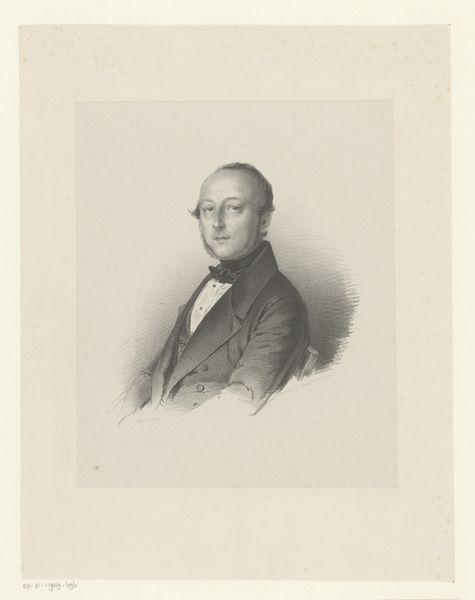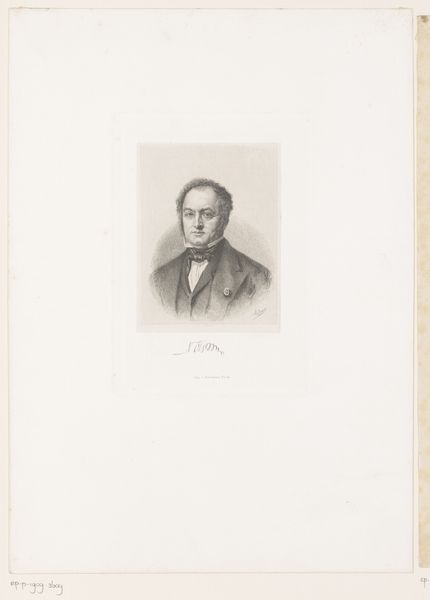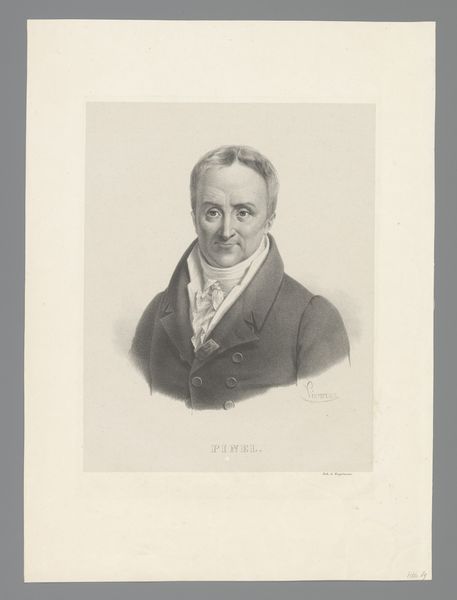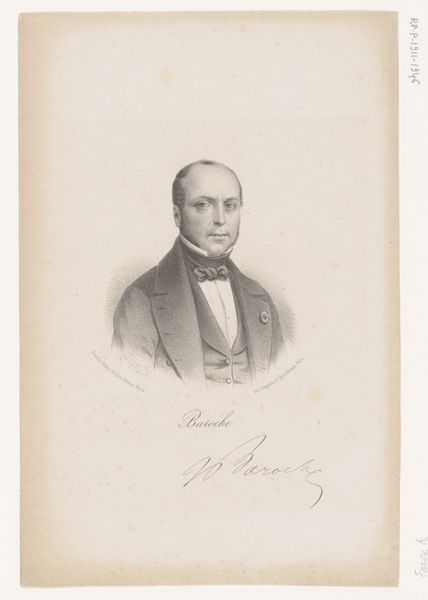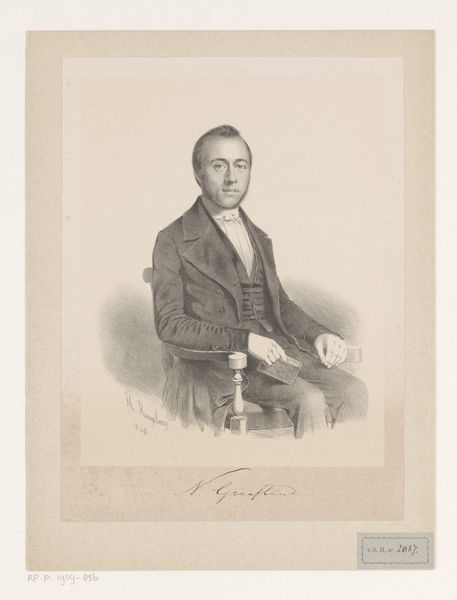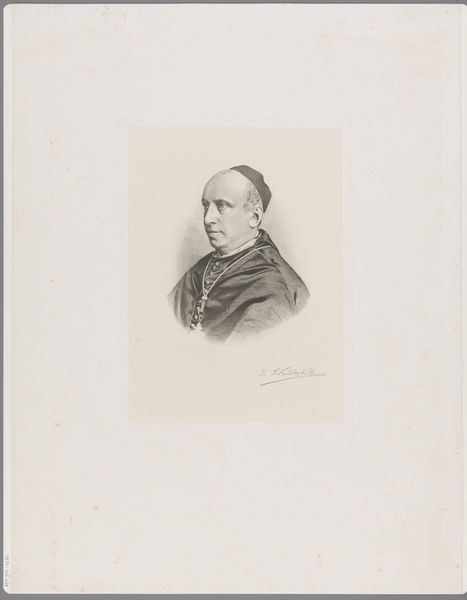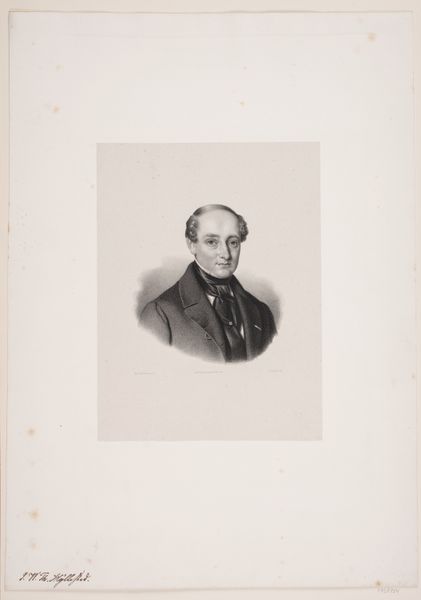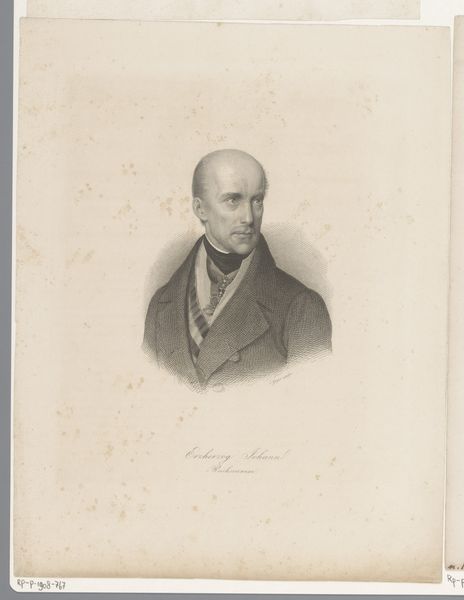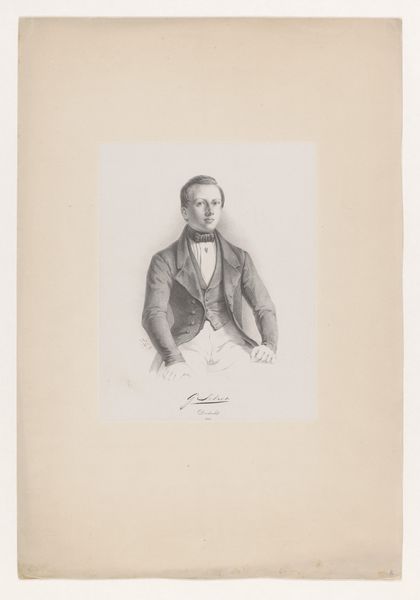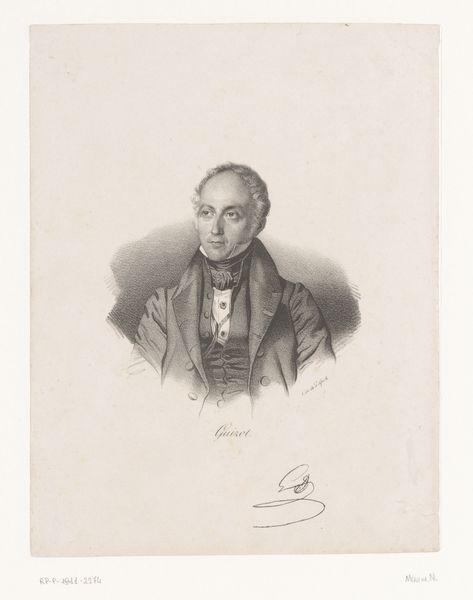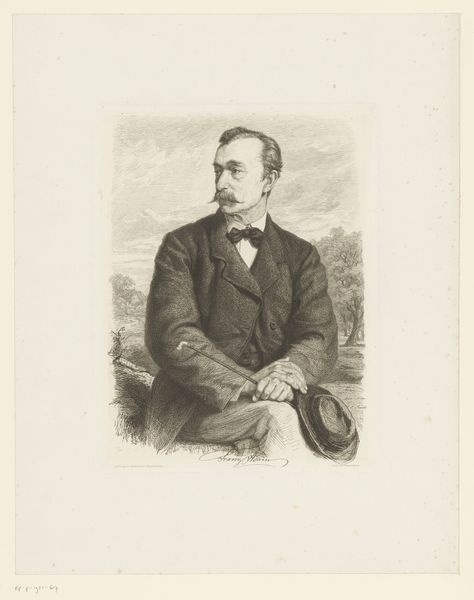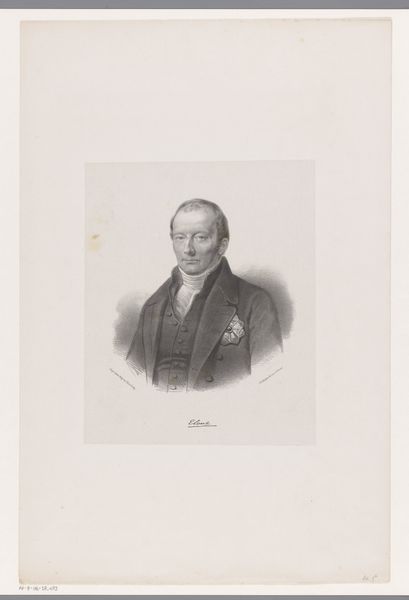
drawing, print, paper, graphite, engraving
#
portrait
#
drawing
#
aged paper
# print
#
paper
#
graphite
#
academic-art
#
engraving
#
realism
Dimensions: height 510 mm, width 358 mm
Copyright: Rijks Museum: Open Domain
Curator: Here we have Ludwig Pietsch's "Portret van Rudolf Virchow," which, rather impressively, spans from 1834 to 1899, offering us a glimpse into a significant figure through the lens of a changing era. The work employs graphite and engraving on paper. Editor: Well, hello there, serious gaze! It feels almost… Victorian-detective-ish. Very sharp and proper, but with the potential to unravel mysteries, wouldn't you say? I like the creamy, aged tones of the paper, too, gives it a nostalgic, book-found-in-the-attic sort of feel. Curator: Absolutely! The subject, Rudolf Virchow, was a prominent pathologist and politician; seeing his portrait as both a visual document of an individual and an artifact representing the political climate of 19th-century Germany really allows us to think about questions around political power and the authority vested in scientific expertise at the time. Editor: I get that authority vibe, definitely! But tell me, does he look a bit… trapped? Framed, not just by the edge of the image, but by the rigid collar and the proper coat? Maybe I’m projecting my own anti-establishment sentiments onto it, haha. Curator: It’s a valid interpretation! We can consider this portrait through the social norms governing representation. Restraints of dress and comportment reflected one's status in society. Moreover, as an advocate for social medicine, Virchow understood and challenged certain constrictions that affected public health. Editor: Ah, that’s good food for thought! Knowing he challenged social structures casts a completely different light on that seemingly constrained portrait. It's like he's got a secret rebellion simmering just beneath the surface! Clever guy, that Virchow. Curator: Yes, and considering Pietsch’s role in portraying leading figures of his time, the portrait transcends simple likeness; instead, it represents negotiations between identity, representation, and social expectation. Editor: Suddenly, this isn't just an old drawing anymore, is it? It’s a battlefield of expectations, whispered revolts, and smoky backrooms of social change! I may need to sit with this a bit longer… Curator: Precisely. Let us take away, then, a renewed appreciation for the layers of narrative embedded within seemingly straightforward portraiture. Editor: Agreed. I’m seeing a lot more than I thought I would, which is always the mark of something great!
Comments
No comments
Be the first to comment and join the conversation on the ultimate creative platform.
